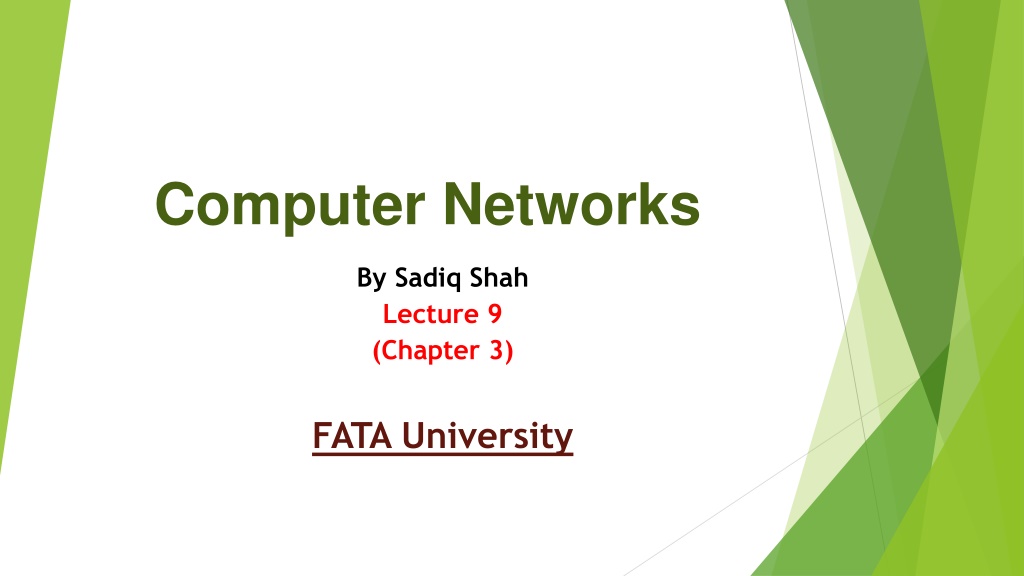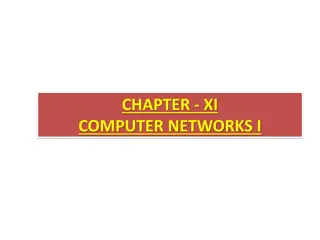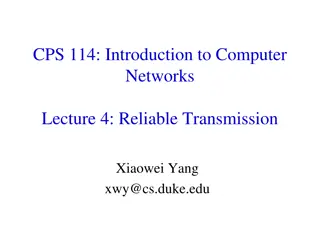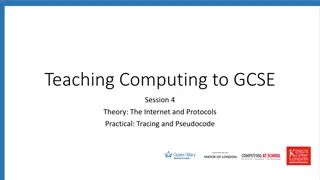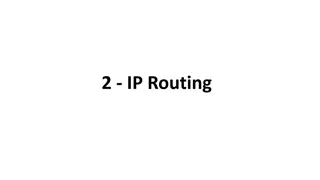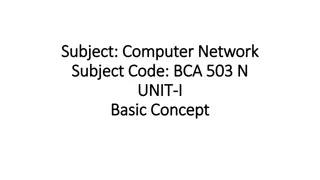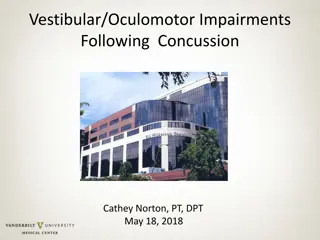Understanding Transmission Impairments in Computer Networks
Signals traveling through transmission media in computer networks can experience attenuation, distortion, and noise, leading to signal loss and changes in form or shape. Attenuation results in energy loss requiring amplification, while distortion alters the signal's composition. Engineers use decibels to measure signal strength changes due to attenuation, with examples illustrating power loss calculations. Awareness of these impairments is crucial for effective network communication.
Download Presentation

Please find below an Image/Link to download the presentation.
The content on the website is provided AS IS for your information and personal use only. It may not be sold, licensed, or shared on other websites without obtaining consent from the author. Download presentation by click this link. If you encounter any issues during the download, it is possible that the publisher has removed the file from their server.
E N D
Presentation Transcript
Computer Networks By Sadiq Shah Lecture 9 (Chapter 3) FATA University
TRANSMISSION IMPAIRMENT Signals travel through transmission media, which are not perfect This means that the signal at the beginning of the medium is not the same as the signal at the end of the medium. What is sent is not what is received. Three Causes of impairment are attenuation, distortion, and noise.
1. Attenuation Attenuation means a loss of energy. When a signal, simple or composite, travels through a medium, it loses some of its energy in overcoming the resistance of the medium. That is why a wire carrying electric signals gets warm after a while. Some of the electrical energy in the signal is converted to heat. To compensate for this loss, amplifiers are used to amplify the signal. Figure 3.27 shows the effect of attenuation and amplification.
Attenuation Decibel To show that a signal has lost or gained strength, engineers use the unit of the decibel. The decibel (dB) measures the relative strengths of two signals or one signal at two different points. Note that the decibel is negative if a signal is attenuated and positive if a signal is amplified. Variables P1 and P2 are the powers of a signal at points 1 and 2, respectively
Example 3.26 Suppose a signal travels through a transmission medium and its power is reduced to one-half. This means that P2 =0.5 P1. In this case, the attenuation (loss of power) can be calculated as; A loss of 3 dB ( 3 dB) is equivalent to losing one-half the power.
2. Distortion Distortion means that the signal changes its form or shape. Distortion can occur in a composite signal made of different frequencies. Each signal component has its own propagation speed (see the next section) through a medium and, therefore, its own delay in arriving at the final destination In other words, signal components at the receiver have phases different from what they had at the sender The shape of the composite signal is therefore not the same. Figure 3.29 shows the effect of distortion on a composite signal.
3. Noise Noise is another cause of impairment. Several types of noise, such as; 1. Thermal noise, 2. Induced noise, 3. Crosstalk and 4. Impulse noise, may corrupt the signal. Thermal noise is the random motion of electrons in a wire, which creates an extra signal not originally sent by the transmitter. Induced noise comes from sources such as motors and appliancses. These devices act as a sending antenna, and the transmission medium acts as the receiving antenna. Crosstalk is the effect of one wire on the other. One wire acts as a sending antenna and the other as the receiving antenna. Impulse noise is a spike (a signal with high energy in a very short time) that comes from power lines, lightning, and so on.
Noise and SNR Signal-to-Noise Ratio (SNR) SNR is actually the ratio of what is wanted (signal) to what is not wanted (noise). A high SNR means the signal is less corrupted by noise; a low SNR means the signal is more corrupted by noise. The signal-to-noise ratio is defined as Because SNR is the ratio of two powers, it is often described in decibel units, SNRdB, defined as
SNR Example Example 3.31 The power of a signal is 10 mW and the power of the noise is 1 W; what are the values of SNR and SNRdB? Solution The values of SNR and SNRdB can be calculated as follows:
